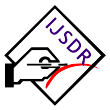Imp Links for Author
Imp Links for Reviewer
Research Area
Subscribe IJSDR
Visitor Counter
Copyright Infringement Claims
Indexing Partner
|
Published Paper Details
|
|
| Paper Title: | EVALUATION OF THE SHEAR BOND STRENGTH OF THREE TYPES OF RETAINER WIRES BONDED WITH A COMPOSITE ADHESIVE - AN IN-VITRO STUDY |
| Authors Name: | Dr Ranjitha G , Dr Azam Pasha , Dr. Rabindra S Nayak , Dr. Vinay K, Dr. Irfan Basha S , Dr. Sindhu D, Dr. Suresh S Nair |
| Unique Id: | IJSDR2003007 |
| Published In: | Volume 5 Issue 3, March-2020 |
| Abstract: | BACKGROUND AND OBJECTIVES: Unwanted post treatment tooth movements are known as relapse. To counter such relapse, the employment of bonded retainers to the mandibular or maxillary incisors has become an established part of Orthodontic practice. Therefore, the purpose of this in- vitro study was to investigate the shear bond strength offered by the various combinations of lingual retainer wires and composite and the Yield strength (Y), Ultimate tensile strength (UTS) andw4 Modulus of Elasticity (E) retainer wires used. MATERIALS AND METHOD: The materials used for the study included different orthodontic retainer wires and composite. The orthodontic retainer wires used was Ortho Flextech - Stainless Steel(Group 1), OrthoClassic Dead Soft Retention Wire(Group 2), and custom made twised wire (0.010” Stainless Steel Ligature)(Group 3). Composite that was used Transbond Lingual Retainer (3M Unitek,).The light cure unit used was from Elipar-3M ESPE. 90 human incisors with no visible enamel defects were used. Retainer wires were bonded on the lingual surfaces of the teeth. 45 samples were divided into 3 groups, which were subjected to debonding with a chisel head in UTM. Each retainer wire was tested for the flexural properties through tensile testing. Comparisons of the means of SBS values and flexural properties values were made with one way ANOVA & Post Hoc Tukey’s. RESULT: The SBS values of the three groups indicated statistically significant difference (P< 0.05) in which bond strength (MPa) is highest in the Group 2 followed by Group 1 and Group 3. In flexural properties custom made twised wire (0.010” Stainless Steel Ligature) was highest CONCLUSION: The present study concluded that although there is significant difference in the mechanical properties of the different lingual retainer wires, they are still suitable for clinical use. |
| Keywords: | Lingual Retainer, Shear Bond Strength, Modulus Of Elasticity, Ultimate Tensile Strength, Yield strength |
| Cite Article: | "EVALUATION OF THE SHEAR BOND STRENGTH OF THREE TYPES OF RETAINER WIRES BONDED WITH A COMPOSITE ADHESIVE - AN IN-VITRO STUDY", International Journal of Science & Engineering Development Research (www.ijsdr.org), ISSN:2455-2631, Vol.5, Issue 3, page no.30 - 36, March-2020, Available :http://www.ijsdr.org/papers/IJSDR2003007.pdf |
| Downloads: | 000337214 |
| Publication Details: | Published Paper ID: IJSDR2003007 Registration ID:191440 Published In: Volume 5 Issue 3, March-2020 DOI (Digital Object Identifier): Page No: 30 - 36 Publisher: IJSDR | www.ijsdr.org ISSN Number: 2455-2631 |
|
Click Here to Download This Article |
|
| Article Preview | |
|
|
|
Major Indexing from www.ijsdr.org
| Google Scholar | ResearcherID Thomson Reuters | Mendeley : reference manager | Academia.edu |
| arXiv.org : cornell university library | Research Gate | CiteSeerX | DOAJ : Directory of Open Access Journals |
| DRJI | Index Copernicus International | Scribd | DocStoc |
Track Paper
Important Links
Conference Proposal
ISSN
 |
 |
DOI (A digital object identifier)
  Providing A digital object identifier by DOI How to GET DOI and Hard Copy Related |
Open Access License Policy
Social Media
Indexing Partner |
|||
| Copyright © 2024 - All Rights Reserved - IJSDR | |||






Facebook Twitter Instagram LinkedIn